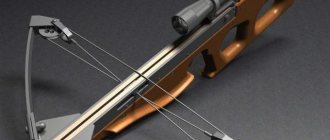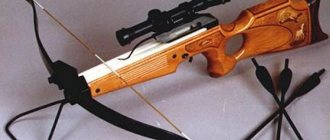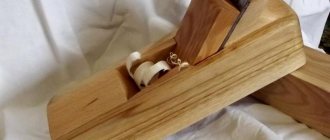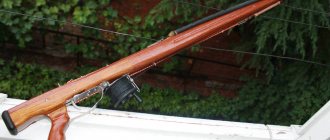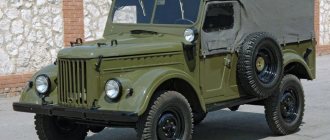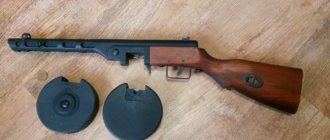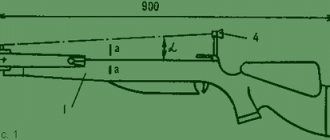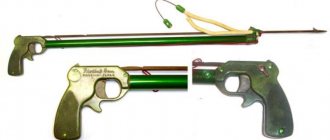European spearfishing, which originated in the 20s of the last century, is an activity that requires a person to have good physical and theoretical training. Diving while holding your breath, often in conditions of poor visibility, currents and the presence of various obstacles under water creates serious difficulties for the hunter in itself, while the correct choice of weapons and equipment is of no small importance for the success of the hunt.
Crossbow for underwater hunting.
The structure of the crossbow and its main characteristics
Hunting underwater can be carried out using various weapons: spring, hydropneumatic and pneumatic guns, as well as crossbows.
The last two types of weapons are the most accessible and common, often used by beginners and suitable for hunting in lakes and ponds. The principle of operation of an underwater crossbow is no different from its land version: the energy accumulated in the stretched elastic rods is transferred to the harpoon, which acquires sufficient speed to hit the target. When charged, the rods are held by the harpoon, which in turn is held by the trigger. A line is attached to the crossbow harpoon, with the help of which the hunter pulls the prey towards him.
Crossbow advantages:
- Accuracy and low noise shot.
Crossbow shotgun. - No recoil when shooting.
- Simple and reliable design.
- Stable shot power, unlike pneumatic guns.
- Long service life.
- Relatively low price.
At the same time, it has large dimensions, making it difficult to move in difficult places, and less power than pneumatic weapons.
The underwater crossbow consists of the following main parts:
- A barrel made of aluminum or composite materials. The barrel determines the target firing range: it is, as a rule, 2-3 of its length.
- For effective hunting, crossbows with a barrel length of at least 70 cm are used, but the maximum length can exceed 1.5 m.
- The rigidity of the barrel directly affects shooting accuracy, so it can be given a complex shape that increases resistance to bending loads while maintaining a small weapon weight.
- Rods that are attached to the head part using threaded bushings. The diameter of the rods is in the range of 16-22 mm. The larger it is, the more powerful the crossbow. On the other hand, thick rods make cocking difficult. The materials are rubber or, more preferably, latex, which is less susceptible to external influences.
Underwater crossbow: drawing and dimensions. - The head part (headband), along which the harpoon moves at the moment of the shot. She may be:
- open. Provides good visibility and maximum shot power with less accuracy. The rods have a ring shape;
- closed. This type is characterized by high accuracy with, often, insufficient power;
- combined (mixed). It combines both power and high shot accuracy.
- Harpoon.
The material for its manufacture is stainless steel or titanium. Harpoons for hunting. Structurally, a harpoon is a rod with a tip and a flag-tooth attached at one end, and at the other - a hole for a line and a lock for a trigger. Harpoons with a rod diameter of 6-7 mm are considered the fastest. For hunting large fish, thicker models with a diameter of 7-8 mm are used. The number of flag teeth can also be different: harpoons with one tooth have high penetrating power, but are prone to getting stuck in obstacles; two-pronged models hold prey more reliably, get stuck less often, but have less penetrating power. - A handle designed to hold a weapon. It also houses a regular or reversible trigger mechanism and a line releaser that releases the line after the shot. The line releaser is usually metal with a bottom or side attachment to the barrel. The reversing mechanism increases the firing range and is a more preferable option. Metal or plastic is used to make the handle. Often the handle has an anti-slip coating.
Rubber shotgun.
How to make a harpoon with your own hands
Unfortunately, not every person can afford to spend money on their next whim. Therefore, many fishing enthusiasts who want to save money are interested in how to make a harpoon themselves. It consists of two parts: a pole and a tip. The first one should be long, about two to two and a half meters. For this, a regular beam is used, but it is worth noting that a shovel handle will not work in this situation. It is necessary to carve an even pole out of it.
It's going to be a little more complicated with the tip. You need to take a piece of metal and weld several sharp metal pins to it. Spokes from old motorcycles are best suited for this. On the other hand, it is necessary to weld a short pipe, comparable to the handle. Then connect the two parts of the harpoon together. Yes, it won’t be the most elegant weapon for fishing, but it will cost much less.
Drawing of an underwater crossbow for fishing
Making an underwater crossbow with your own hands at home is not particularly difficult and does not require detailed drawings.
Speargun: drawing.
The barrel is made of a massive tetrahedral beam that is resistant to “breaking” loads, which minimizes the risk of destruction of the crossbow with excessive rod power.
The absence of a handle and trigger mechanism also simplifies the design. The weapon is held with both hands when firing, which can be inconvenient. Retrofitting the crossbow with a handle and trigger mechanism is possible both during manufacturing and later.
MVD Predator Zeso Open 120
Externally, the crossbow looks very bulky. But this does not at all prevent the hunter from making an accurate shot. It has a sensitive stainless steel trigger, which is protected from accidental activation by a reliable fuse. The ergonomic handle provides a comfortable grip, absorbs recoil, and ensures instant aiming at the target. The barrel part is made of durable anodized aircraft-grade aluminum alloy, which prevents deformation of the weapon under physical and mechanical stress. The crossbow is resistant to corrosion and temperature changes thanks to a special coating. Hit the target from a distance of up to 6 m.
Assembling a homemade crossbow
The manufacture and assembly of a crossbow is carried out in several main stages:
- Making a barrel. A wooden beam is used as a trunk. If there is a lack of experience in manufacturing such weapons, it is undesirable to make a barrel longer than 76 cm; in other cases, the length is calculated based on the anthropometric data of the owner and hunting conditions. To increase the rigidity of the structure, a 2° bend is formed on the beam by reducing the thickness of one side.
- Making a coil. The base material is rolled wire with a diameter of 6 mm. Installation location: front end of the barrel. The wire is given a U-shape. The sides of the base are attached to the wide edges of the beam at ¼ of their length using perforated metal tape and self-tapping screws.
- The reel drum material is plastic. A hole with a diameter of 2.5 mm is made in the drum, through which the fishing line is passed, secured and wound. The coil is put on the short side of the base, and the entire assembly is mounted on the barrel. In this case, the screws are screwed in asymmetrically: further from the end on one side and closer on the other.
- Making a guide. Material: aluminum tube with an internal diameter of 6.5 mm and an external diameter of 9.5 mm. The tube is cut into two pieces of 1 mm each. Using a metal perforated tape and self-tapping screws, the first section is attached at a distance of 10 cm from the front end of the barrel, the second - directly at the headband.
- Making a harpoon . Material: rolled wire with a diameter of 6 mm, cut to the required length. It is advisable to entrust sharpening to a specialist.
- Traction installation. Material: standard rods for underwater crossbows with a diameter of 16-18 mm. The length is calculated so that the median tension falls on the end of the barrel. The rod is secured using plastic clamps. The mounting points are the sides of the coil base.
- A ring is passed through the rod to facilitate tension. The point of maximum pull tension should coincide with the hook of the trigger mechanism (if the crossbow is equipped with one).
If there is a need to manufacture and install the trigger mechanism and handle, then it is advisable to carry out these operations after testing the crossbow.
All metal parts used in the manufacture of the crossbow must be made of stainless steel. The wooden parts of the structure are stabilized, painted, varnished or otherwise protected from exposure to water.
Safety precautions
Operating a crossbow requires compliance with safety rules. They apply to no lesser extent to homemade samples:
- It is prohibited to point the crossbow towards people.
Disassembled speargun. - Shooting outside the water environment is not permitted.
- The crossbow can only be loaded and unloaded underwater.
- Storing loaded weapons is prohibited.
- After use, the crossbow is washed, lubricated and cleaned.
- The technical serviceability of the weapon is checked before and after the hunt.
- The crossbow barrel is periodically checked for signs of deformation.
DIY harpoon
Many people prefer not to purchase harpoons or tips for them in specialized stores, but to make their own. This allows you to get a weapon that meets the individual requirements and preferences of the hunter, so it has undeniable advantages over factory products.
The manufacturing technology is quite simple; anyone can handle this process, since it does not require any specific skills or knowledge.
First you just need to make sure you have a set of tools for working with metal and the following materials:
- A fairly thick stick, reliable and made of suitable material. It will act as a rod.
- The wire is made of steel, the main requirement for it is the same - reliability and strength.
- Synthetic cord or rope.
The action algorithm is described below:
- Initially, steel wire for the tips is cut:
the length of the segments should be within 20-30 cm, and the diameter should not exceed 4-5 mm. - On each segment you need to measure about 0.5-0.7 cm
from any one edge and make a bend with an angle of 90°. - The opposite end of the segment, on which there is no bend
, is flattened with hammer blows. - The flattened edges of the wire are filed
and hand-finished to give them a hook-like shape. - Holes are made in a pre-prepared metal stick
through which wire is inserted into it. The flattened and turned side should remain on the outside. - The joints are additionally sealed.
- The structure is reliably rewound with synthetic cord and rope
; at least 10-20 turns will be required.
Trial
Testing a crossbow consists of checking the performance of its parts and mechanisms.
All actions are carried out in shallow water:
- The trigger mechanism, if present, must ensure reliable retention of the rods in the cocked position, control the descent and exclude the possibility of spontaneous firing.
- The exit of the harpoon from the guide and the rotation of the reel should be unimpeded.
- Shooting at a target determines the shooting range and accuracy.
Spring gun for underwater hunting.
Salvimar Hero 95
The Italian development is suitable for professionals and amateurs who prefer to hunt on sea and ocean coasts. The aluminum barrel has an oval cross-section and streamlined shape, which avoids interference when moving at significant depths. The Teflon guide occupies the upper part of the weapon along the entire length, which ensures excellent sliding of the harpoon and guarantees shooting accuracy. The weapon can be configured for right or left hand. The trigger mechanism is adjustable, and the trigger force can also be adjusted if necessary.
Barrel type
A crossbow for underwater hunting contains a head part, which can be presented in the following options:
- Open – offers the hunter better visibility and has increased power.
- Closed - stands out among other solutions due to its improved accuracy, which is ensured by the presence of paired rods.
- Single pull is a good choice for hunters who are willing to sacrifice accuracy for maximum power.
- Mixed - here a specific, circular pair of thrust is used, which makes it possible to increase the power of the weapon without sacrificing accuracy. This type of head is best suited for catching large fish.
- Hydroformed barrel - allows you to get a perfectly flat, calibrated shot trajectory for the most accurate shooting.
As for the rods, they come in different thicknesses and lengths. For hunting relatively small fish, it is advisable to use crossbows, where the head part is equipped with thin rods. The thickest rods are suitable for catching large catches.
Harpoons - ancient whaling weapons
The configuration of harpoons was very diverse. Classic European or American whaling tools have iron shafts and wide, short blades. More often, such harpoons have wooden handles; very long ropes were tied to them to the boats.
From a six-meter distance, harpooners threw their guns at the whales. At the moment of throwing, the points did not separate from the shafts. The ropes tied to the harpoons quickly unwound, and the whales quickly pulled the boats along the waves until they got tired. At that moment, whales were finished off, but not with harpoons, but with a spear, and this was done not by the harpooner, but by the captain of the whaleboat. Although, good harpooners were highly respected. In the North, hunters still find the remains of twisted 19th-century tools in the bodies of whales.
Bowstring
If the rope is good quality and you take good care of it, you will use it for a long time. Typically, steel (ropes or cables) or silk fabric are used for the bowstring. True, in our time there are a huge amount of synthetic materials. If you make a bowstring out of Kevlar, it will be a high tensile strength material.
High-power crossbows use a thin steel cable to serve as a bowstring. You can find it in both automobiles and motor vehicles. Breaking loads are more easily tolerated by braided rope. This is due to the fact that a particle of energy collides with synthetic threads. To prevent the bowstring from rubbing against the butt, use special plastic or metal pads.
Last changes
09.05.2014
27.11.2006
The consideration of court case No. A60-32801/2006 dated October 25, 2006 in the first instance has been completed. Organization as a defendant, the amount of claims is 10,900,324 rubles.
25.10.2006
New court case No. A60-32801/2006 dated October 25, 2006 as a defendant, the amount of claims is 10,900,324 rubles.
27.04.2006
The consideration of court case No. A60-37051/2005 dated October 26, 2005 in the first instance has been completed. Organization as a defendant, the amount of claims is RUB 3,094,443.
26.10.2005
New court case No. A60-37051/2005 dated October 26, 2005 as a defendant, the amount of claims is 3,094,443 rubles.
Where to fish
Fish habitat map ▾▾
Fisherman's card
Depending on the location, type of reservoir and game time of day (day/night), the player can encounter different types of fish:
- Big Lake in front of Cetus: Fish Mouth (regular - day)
- Chark Iil (normal - always)
- Norga (rare - night, special bait)
- Yogwun (usual - day)
- Gupolla (regular - always)
